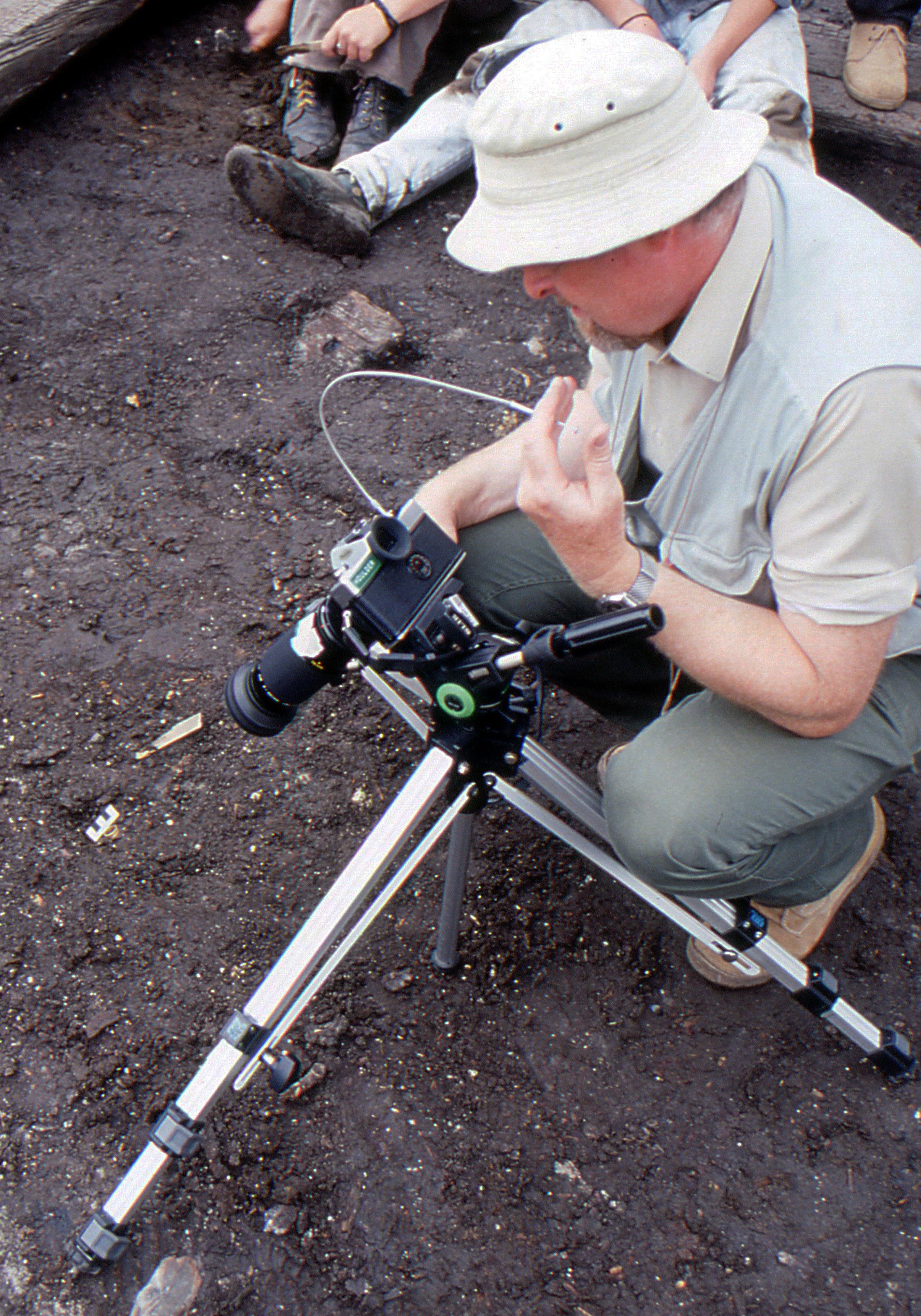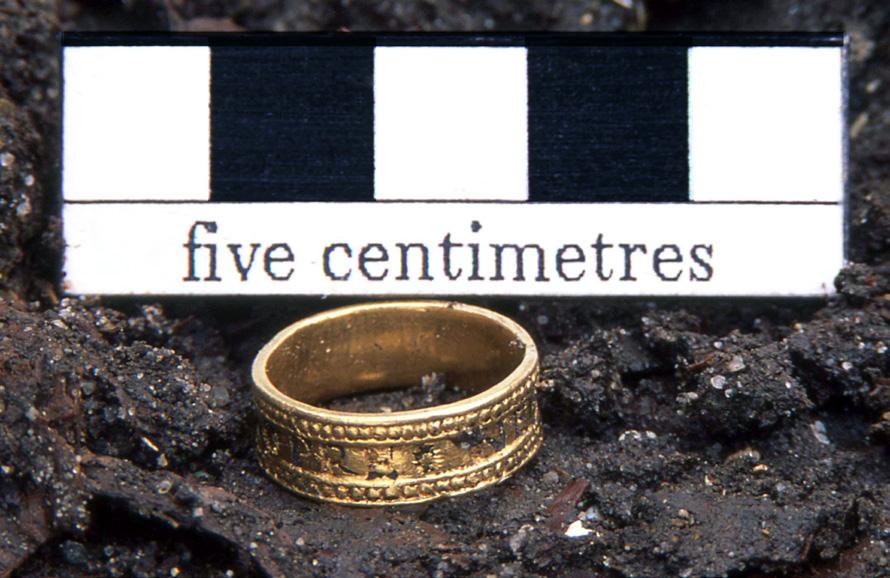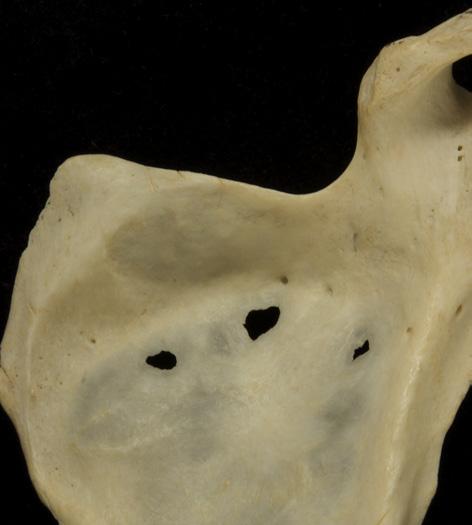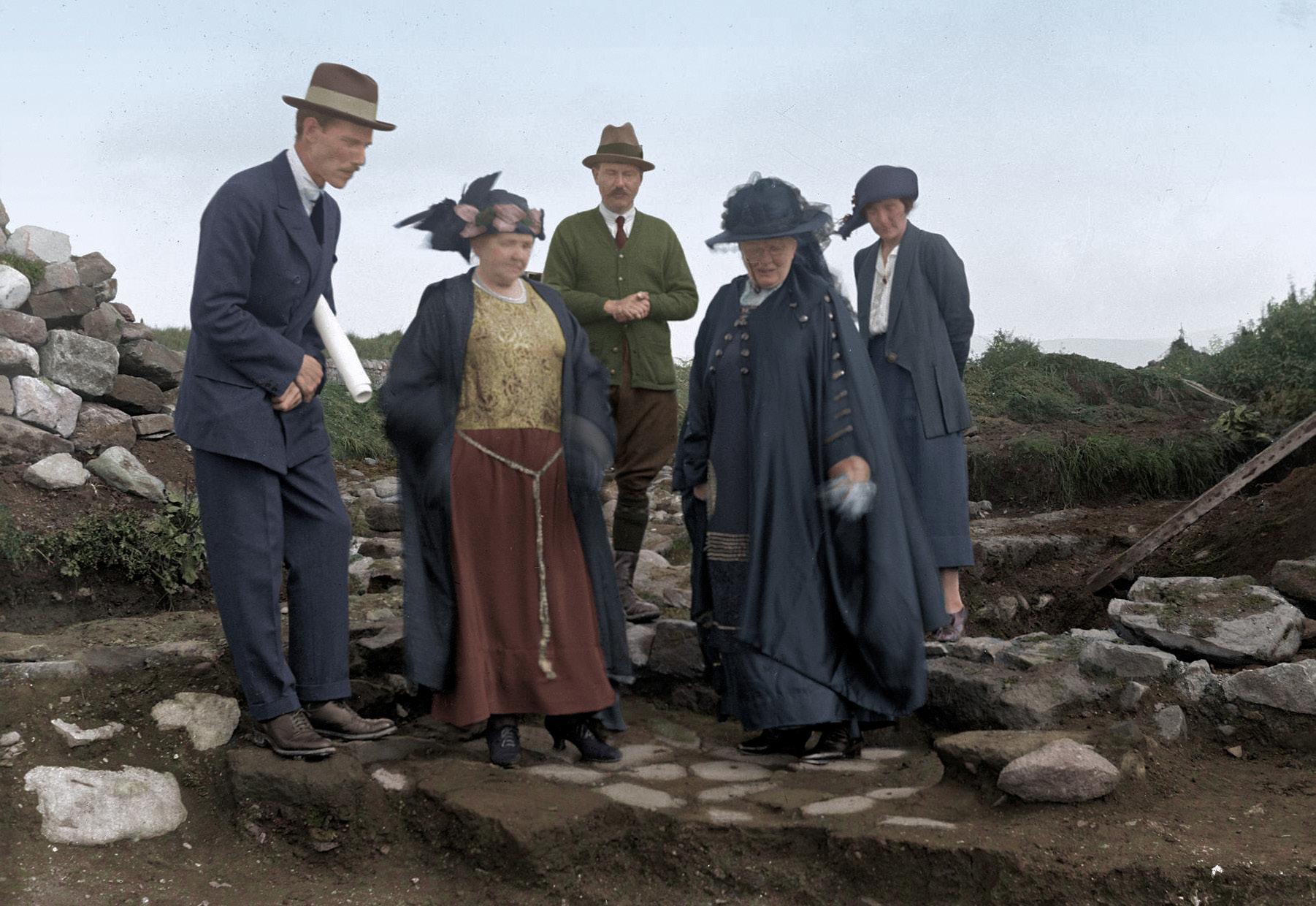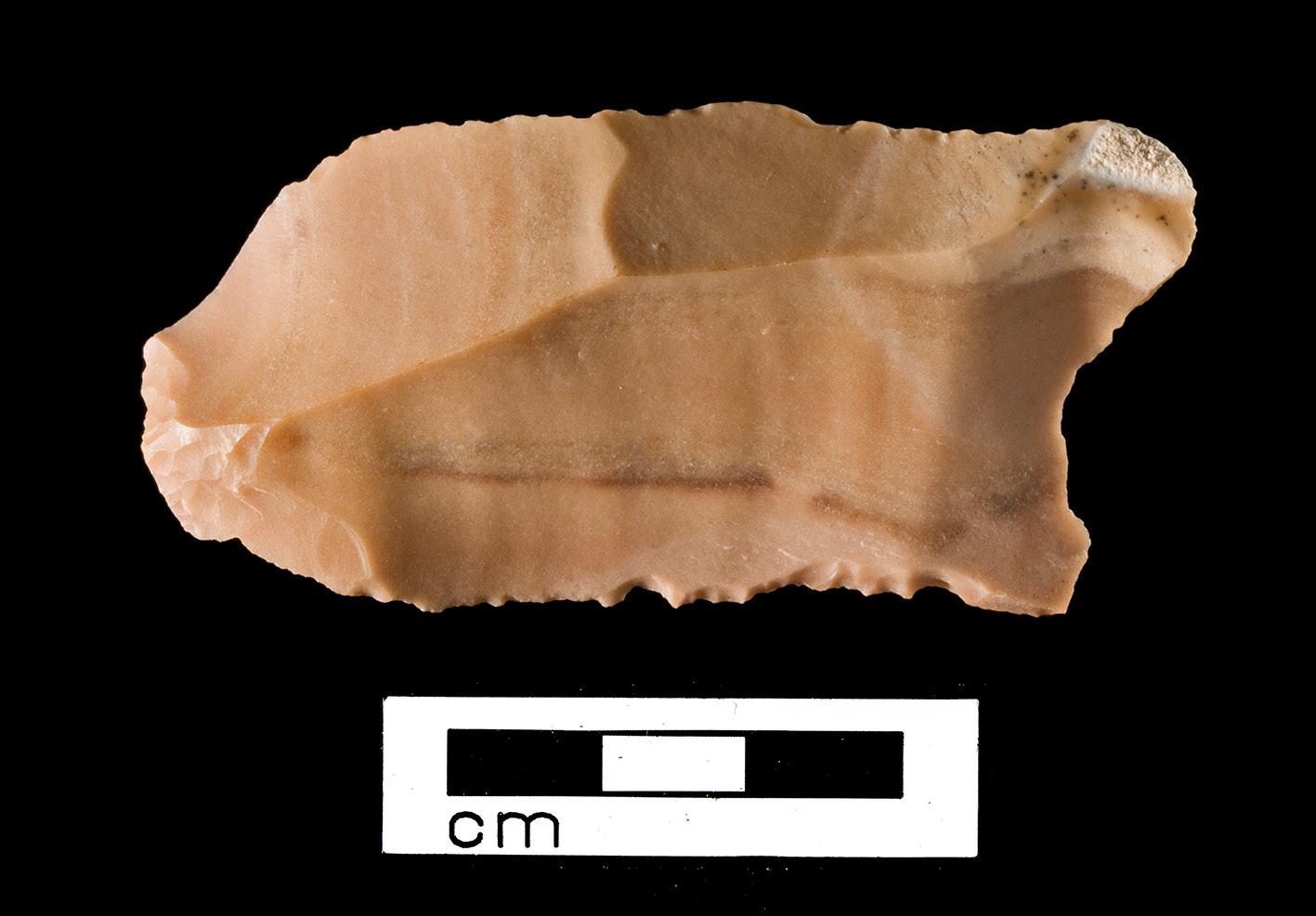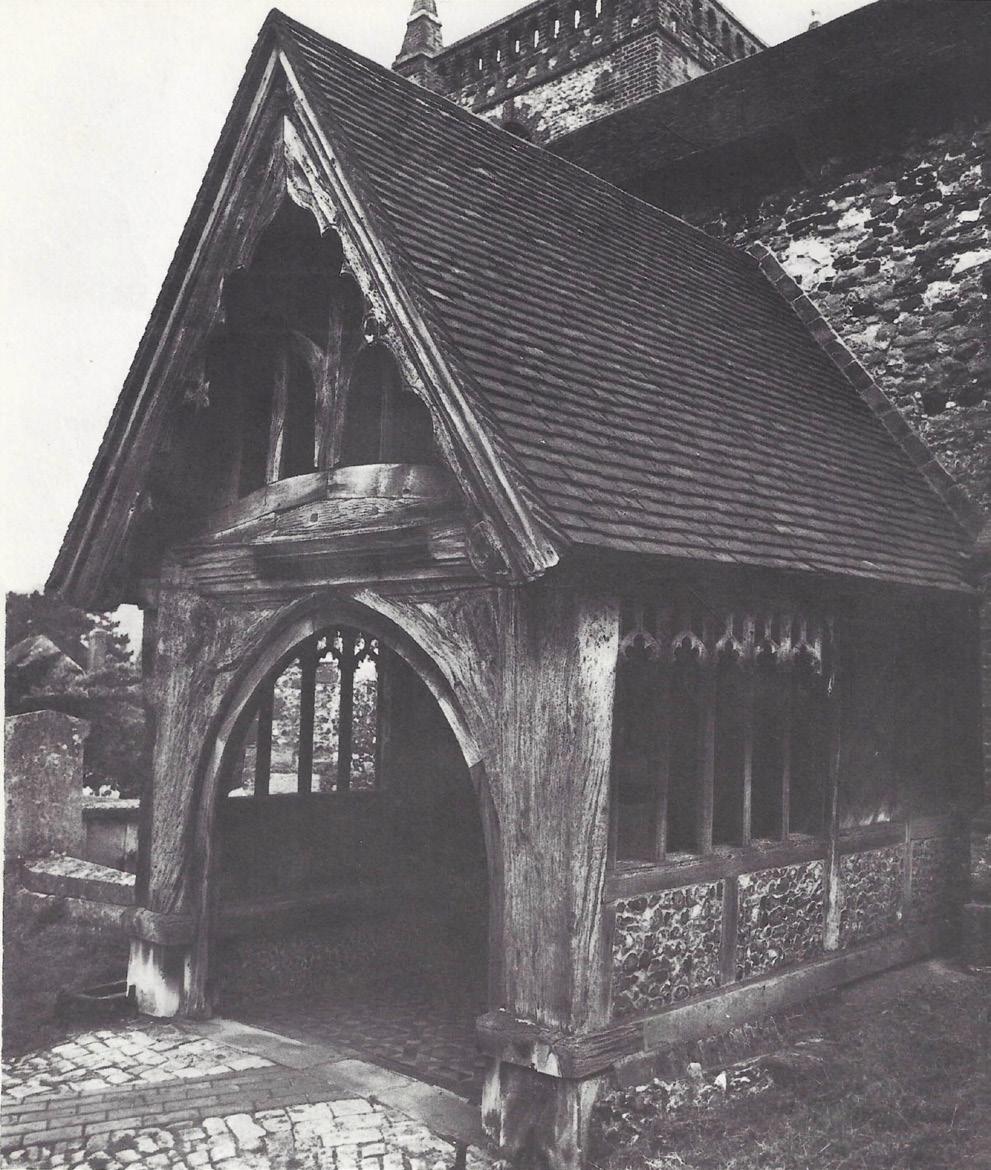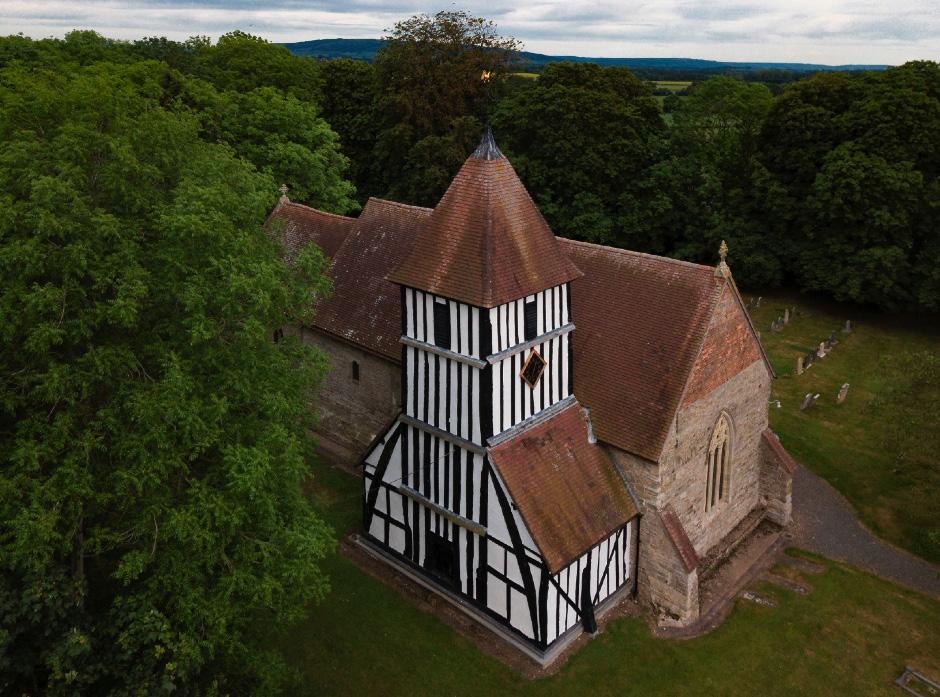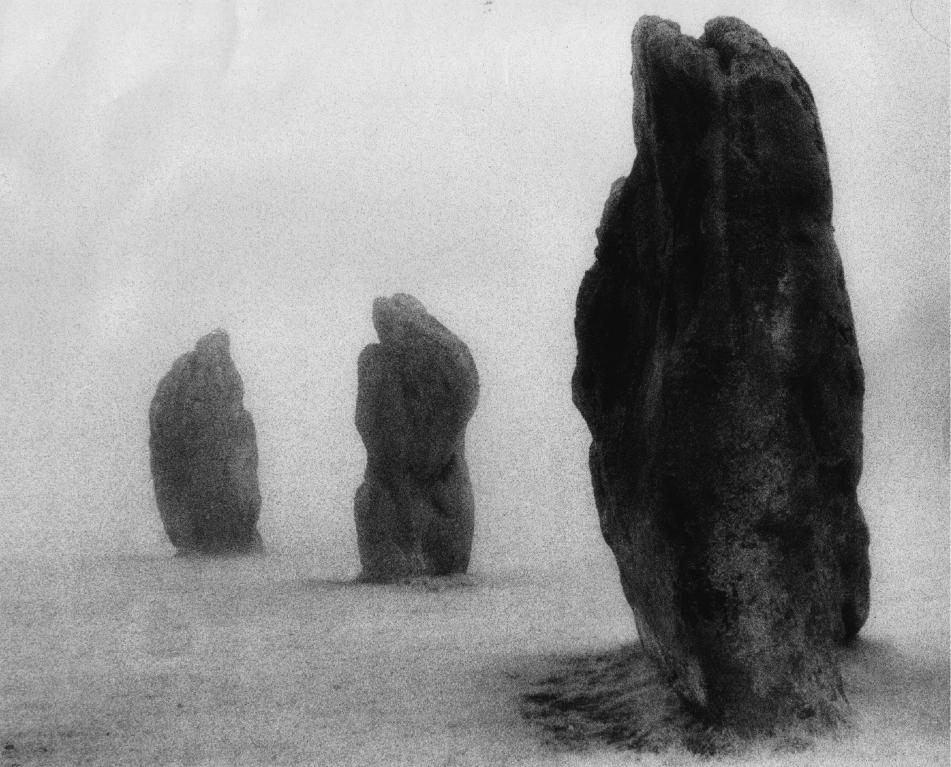
10 minute read
A Life in
A Life in Archaeology Eric Houlder LRPS
Eric is a longstanding member of the Archaeology and Heritage Group and has been the editor for many issues of the journal and newsletters.
My first ever burial, cleaned and pictured at St John’s Priory, Pontefract, 1958. Clearly there is massive room for
improvement in both disciplines. Photographed using a Coronet Viscount.
Ichose this title deliberately as I came into photography via archaeology. In my early and mid teens in the 1950s, I did try a little photography, namely trying to photograph a model aeroplane: a Dornier 215, made up from a wartime kit – with my father’s Vest Pocket Kodak, purchased in a bazaar in Cairo whilst he was stationed in North Africa with the RAF. When this was only moderately successful, I obtained a series of cheap up to date cameras. However, a little book Dad had obtained on the troopship home in 1945 had a greater effect on my future.
The book was Sir Leonard Woolley’s Digging Up the Past, 1930. Though quite out of date in many ways, this fired my imagination, though the library at my traditional grammar school had nothing at all on archaeology to follow it up with! Pelican books helped a lot, but the real catalyst was the television programmes of Mortimer, later Sir Mortimer Wheeler. Then, one day in 1956 a group of people began a probe survey in a local field, the Grange, and I learned that they were studying a Workers’ Educational Association (WEA) class in Basic Archaeology, led by their tutor, Vince Bellamy. Later, they dug a trial trench, and I asked to join in. The following year, a proper excavation was planned on the medieval monastic site beneath the field, and again I joined in as a volunteer; I was too young to join the WEA class, and too busy with the demands of school and the family dairy Business 1 . Whilst digging, a number of us planned to form a local archaeological society and held a meeting in the parish hall. Thus, in April 1957, The Pontefract & District Archaeological Society 2 was born. In 1962, after college, I became Honorary Secretary and am currently Chairman. Photographically I had a slower start, beginning with the aforementioned Vest Pocket Kodak, moving briefly to my mother’s quarter plate instrument, and then to a series of inexpensive cameras, and finally to one of the first Japanese SLRs to come on to the market in 1961, an Aires Penta 35. In the early sixties I qualified as a History teacher, purchased Cookson’s Photography for Archaeologists, and married Joan. My connection with Vince Bellamy’s dig continued, and I befriended one of the older volunteers whom I was thrilled to learn had known Maurice Cookson whilst
With Joan outside our tent at the Sutton Hoo dig campsite at the Wood Hall Hotel, Shottisham in 1968.
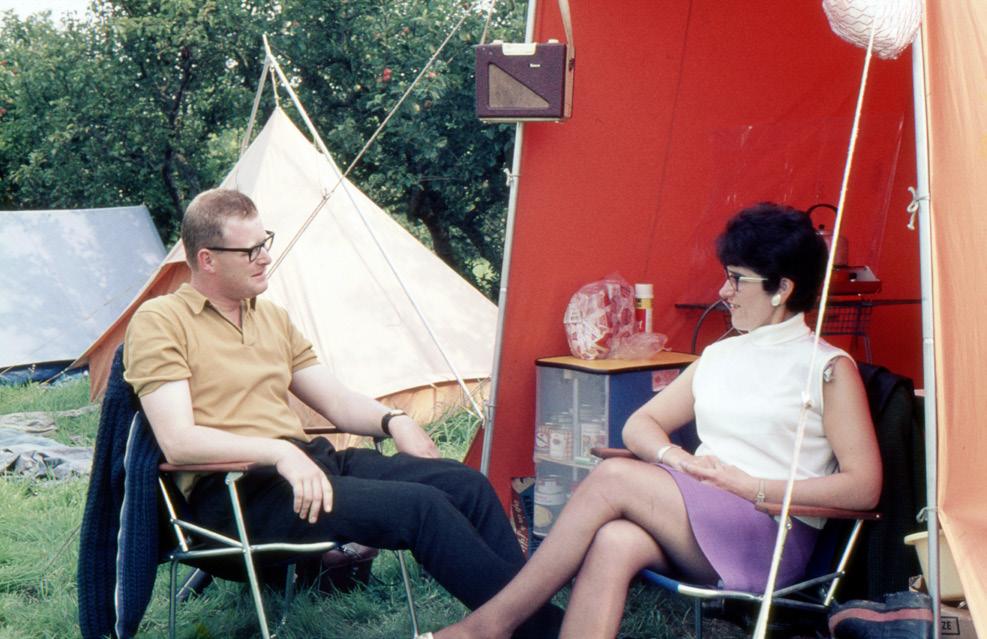
In the Cross keys at Wanborough, 1970 with digging friends John and Maggie Lambert.
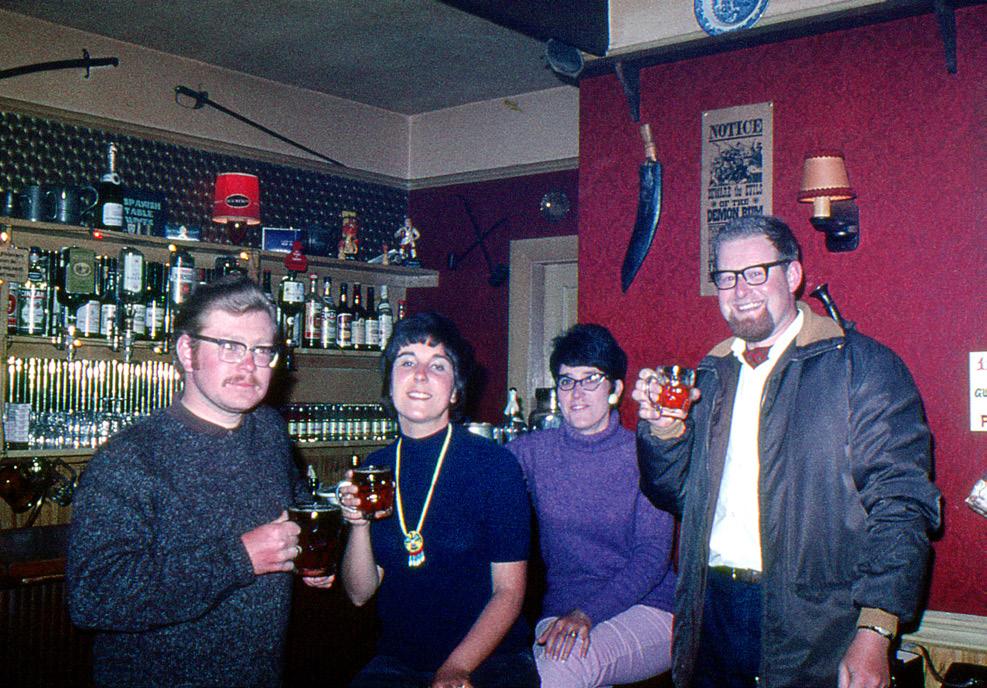
working as a supervisor for Mortimer Wheeler himself.
Peggy 3 and her husband Kenneth settled in Ilkley and trained a number of younger enthusiasts to be meticulous excavators. We repayed her by eventually becoming supervisors on many of the top digs in Britain, including Mucking, Silbury Hill, and Sutton Hoo. There were few professional archaeologists then, and most of us were content to undertake digging in our spare time and holidays, so were technically amateurs. In 1967 I bought into the Minolta MD SLR system with an SR1v, and remained a devotee until the advent of digital imaging. Later, it was joined by a Yashica TLR and then by a Mamiyaflex system. I still have both systems. Also in 1967, I and others received an invitation on British Museum notepaper to join the second excavation at Sutton Hoo. This internationally known site requires no description as readers can find the basic facts of the iconic excavation on line or by visiting it, as it is now a National Trust property. This caused some elation and later some disappointment, for the following year I received a letter from Richard Atkinson himself requesting my presence as a supervisor on the BBC sponsored dig at Silbury Hill. This site and Sutton Hoo were being dug at the same time, and I had already promised to become a supervisor at Sutton Hoo; I had to regretfully decline, although the Wilsons did accept. At this point it is apposite to mention other experiences which proved useful to me as an archaeological photographer. One of them occurred in the beautiful summer of 1959 whilst working as an unqualified supply teacher. The school was situated alongside the Aire & Calder Navigation, and the woodwork teacher with the senior boys had built a dinghy which we launched into the canal. I had shot a reportage series of mono picture of this event with an inexpensive 35mm camera called Ideal Color (sic) 35, though it was not until the sixtieth anniversary that I considered publishing the resulting feature, to some local acclaim 4 . By far the most useful experience was working as a Saturday wedding photographer for a couple of local studios. Many problems occurred and I had to think on my feet, improvising a changing bag from my jacket when for example, a new Rollei Magic jammed solid halfway through the ceremony. The Mecablitz electronic flash supplied, taught me a great deal too. In July 1968, after a couple of weeks digging a Deserted Medieval Village (DMV) under Lawrence Butler in Northamptonshire, we re-joined the Sutton Hoo dig with me as a supervisor of a quarter of the site, to become half the site the following year. Though not employed as a photographer, the Directors, Rupert Bruce-Mitford and Paul Ashbee, recognised my growing expertise and used it at times. I also learned from them, particularly site preparation at which Paul excelled. It transpired that he too had been taught by Maurice Cookson. The lavish funding for the Sutton Hoo dig ended in 1969, and though there was a final season on reduced money and personnel in 1970, I was approached together with another of the supervisors to become a supervisor on another ship dig. This was an offer from Norway, to join a dig on a buried Viking ship beyond the Arctic Circle. Pay was generous, but there was no certain prospect of further work at the close of the dig, and as Joan and I had planned to begin a family in the early Seventies, we had to turn it down. We dug two more summer seasons: in 1970 on a Roman roadside settlement at Wanborough in Wiltshire in advance of the M4, and in 1971 a Saxon village at West Stowe in Suffolk. Victoria was born in summer 1972 and Mark in summer of 1974. Meanwhile, archaeology was becoming more professionalised, and the old style summer digs were becoming a thing of the past. I made a conscious decision to concentrate more on my career in education, and to improve my site photography for amateur sites locally. To this end I joined the new RPS Group as it formed, and attended the early conferences. Locally, I directed (and photographed) several seasons work on M28b at Thorpe Audlin, and in the process
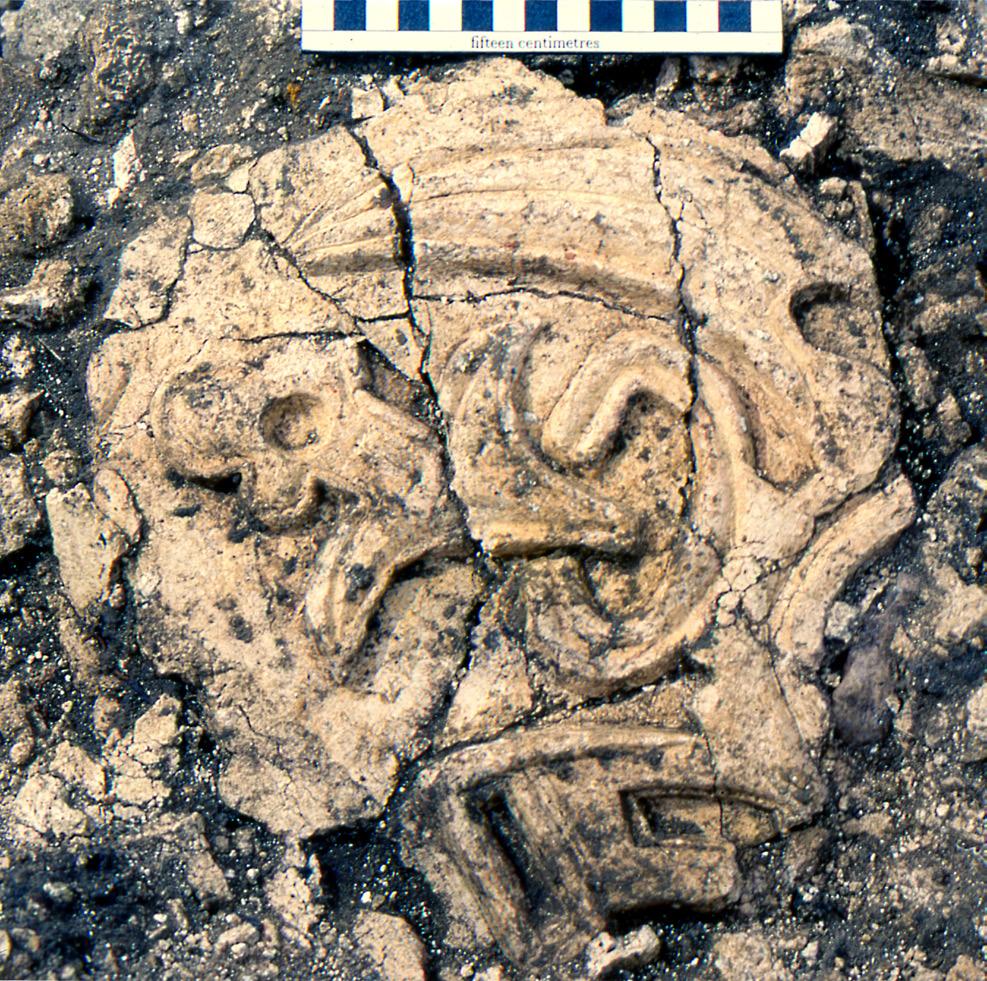
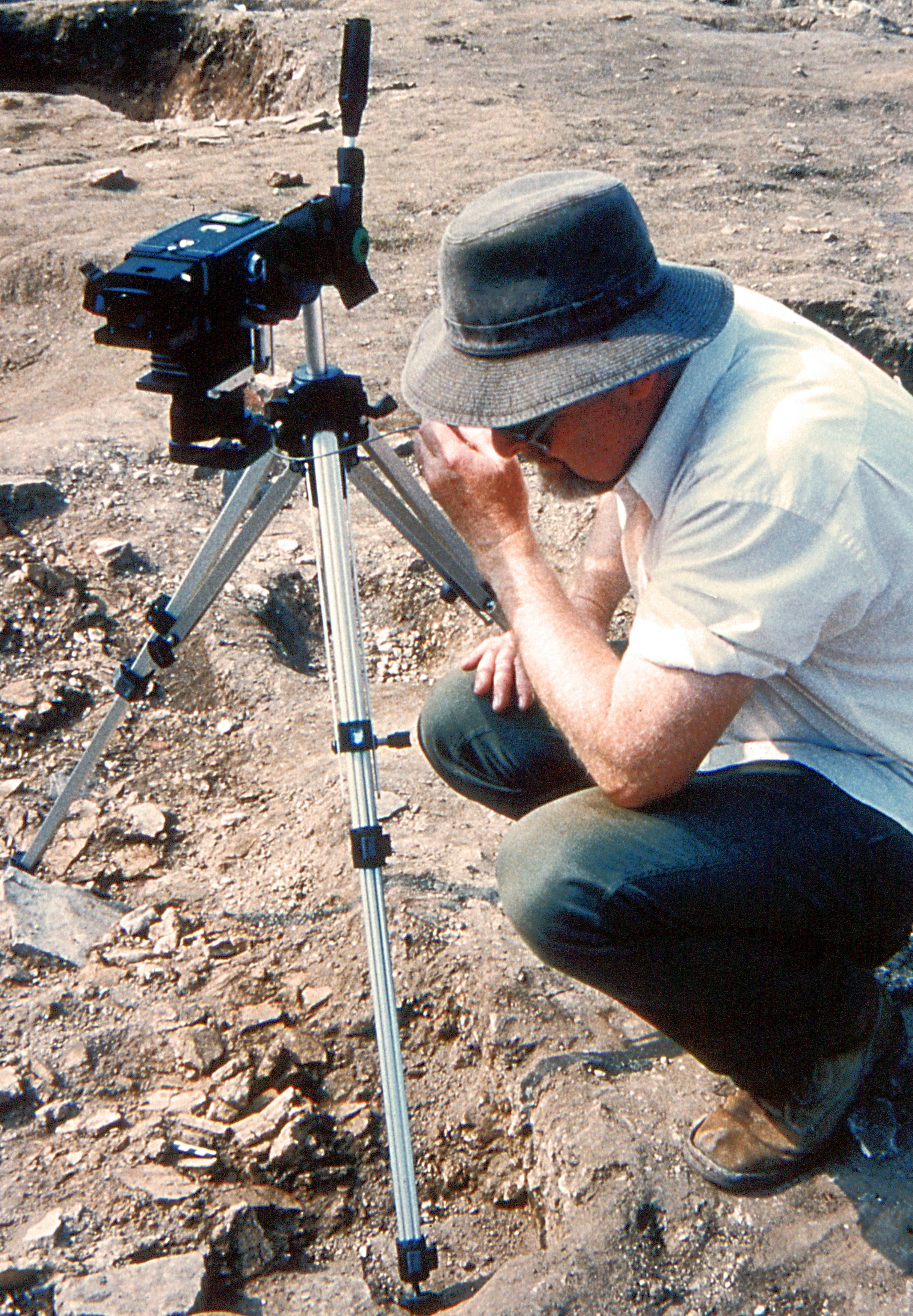
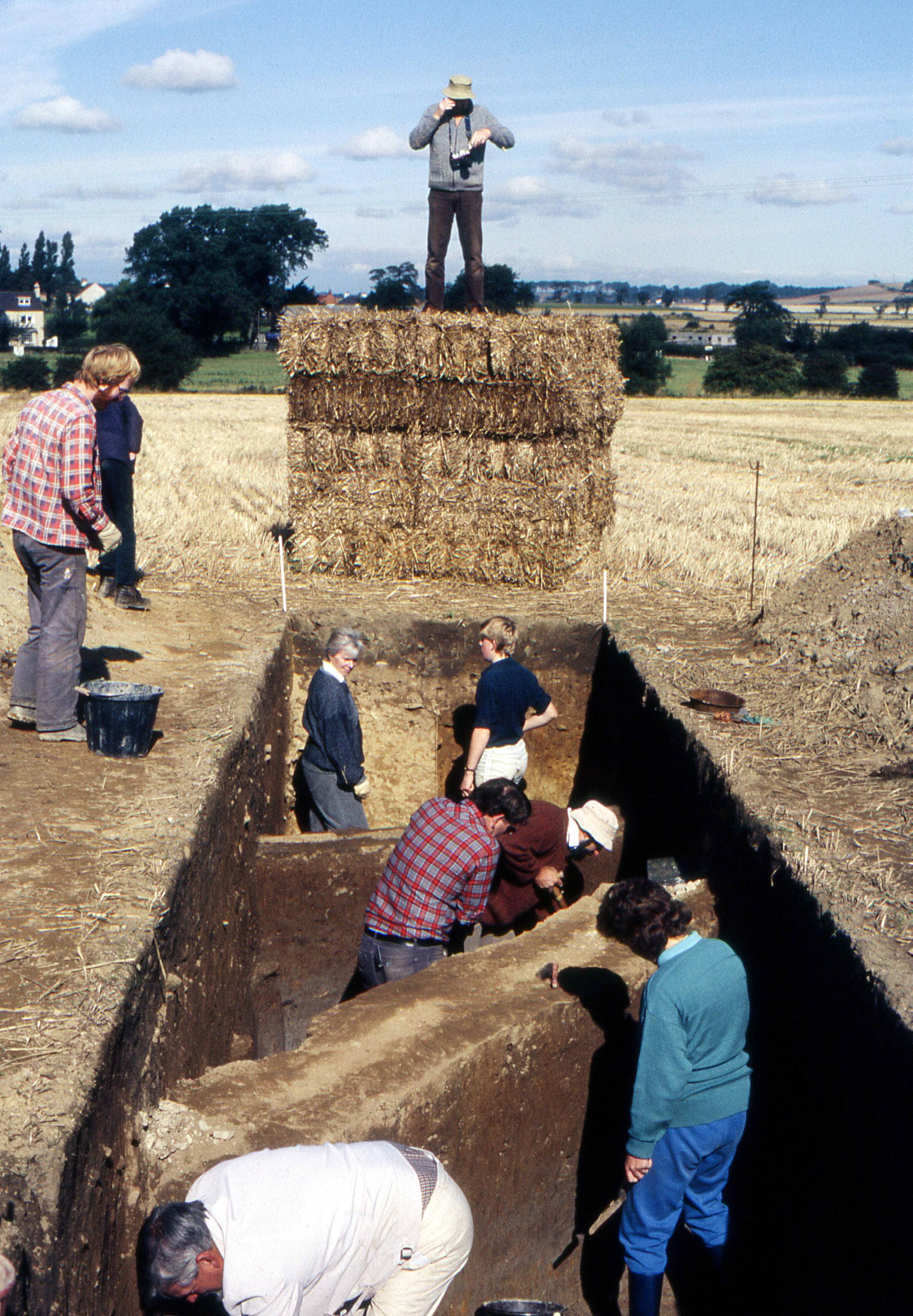

became an unwitting expert on Roman Roads. Aerial archaeology 5 at weekends demanded much less commitment than excavation, and I was lucky enough to work alongside some of the ‘greats’ of the genre, including one of the Malta Gladiator pilots. By this stage I was processing my own colour and monochrome photographs, and contributing to magazines and even the occasional book. Professionally I became Head of History at my old grammar School, a pre-Conquest foundation, though the aim (unfortunately realised) was to eventually transform it into a mixed comprehensive. Our local society was asked in 1985 to lead the investigation of an area of the old town due for re-development, but sensibly I realised (as Field Director of PontArc) that this was too big a bullet for a small group to bite. Instead, the West Yorkshire Archaeology Service was brought in to lead the work, and I met another person who was to have a great effect on me. This was Tony Wilmott, at the time a jobbing archaeologist but eventually Senior Archaeologist at English Heritage. We not only discovered the original town, but an early Saxon church and surrounding cemetery. I was able to involve a number of my senior students in the dig; even the Head Caretaker joined in, such was the enthusiasm. Shortly after that dig finally closed, a late Saxon cemetery was discovered by builders close by, and I found myself directing a cemetery dig under rescue conditions. It was here that I pioneered the now common practise of stencilling the dimensions on scales.
Throughout the following years we continued digging at Thorpe Audlin, recording ancient buildings in the town, and writing features for regional magazines as well as journals. By the end of the ‘80s, National Power was planning to extend their ash tipping site from Eggborough power station to the village of Womersley. It would cover a medieval moated site, so North Yorkshire County Council sponsored a long term dig of the site under Vivienne Metcalf. I became site photographer on the dig each summer, and eventually following early retirement from teaching in 1997, Chief (and only!) Photographer to the Wood Hall Archaeological Trust. Wood Hall was run on the old system with amateur and student volunteers led by professional staff. There was time for experimental work, and time off site for darkroom work too. I had professional accounts with material manufacturers, and was sent new emulsions to try, like ultra-violet and Agfa’s new mono slide film. My deteriorating hearing was pampered by working out in the countryside, whilst my other health problems gradually subsided, a consequence of the lessening of stress, I was informed. The work at Wood Hall was confined to spring, summer and early autumn, so I was free to undertake one of the most interesting assignments to ever come my way. The discovery of a burial pit on the site of the battlefield of Towton (1461) led to a dig in which I was not involved, though as a professional site photographer I was asked to tender for the job of photographing the skulls of the victims for publication. Much of the work was macro and micro utilising my bellows and/or extension tubes, in the studio at Bradford University’s Department of Archaeological Science. As a result I became one of the few people to have handled every single burial from the mass grave. Shortly after I retired from teaching, I was asked to become chairman of the Council for British Archaeology’s Yorkshire region, and I served two terms in that role. Later I was elected a Trustee, and still hold that position. At about this time, the accidental draining of the bed of the River Aire at St Aidan’s opencast mine led to the award winning excavation under John Buglass, another person who had a great effect on my archaeological experience. This dig was entirely unpaid, and I volunteered to undertake all the site photography at my own cost, which was quite considerable, I eventually discovered. The work won a prestigious award from the British Archaeological Awards, with the photography being particularly commended.
More voluntary excavation followed under various directors, and during this time analogue photography was replaced by digital. Though having little physical involvement, I was asked to write the Site Photography Protocol for an excavation on the site of my local hospital; a site on which I had dug alongside the inimitable John Inglis back in 1963. I did take a few official pictures, but these were the last of my career, as in 2010, at seventy, I decided to completely retire. However, the demand for my earlier pictures is such that I still spend much time, pleasurably occupied restoring the colour images which have faded as the result of projection through the years. Looking back, I have been very lucky in my friendships, and in my long career as an amateur, later professional, archaeological site photographer.
References
1. Houlder, E. (2020) I don’t Miss the 4-00 am Alarm at All. Down Your Way, January. 2. Houlder, E. (2007) Described in The First Fifty Years, Pontefract.
3. See https://www.trowelblazers.com for more about Peggy Wilson. 4. Houlder, E. (2019) In the Summer of ’59. Down Your Way, July. 5. Houlder, E. (2020) Aerial Adventure. Heritage Photography, January.
